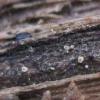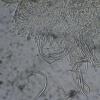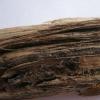
09-01-2026 10:08
 Blasco Rafael
Blasco Rafael
Hola, en el mismo habitat que la anteriorRetamaDia

08-01-2026 21:22
 Blasco Rafael
Blasco Rafael
Hola, He recogido esta muestra de Orbilia sobre Re

07-01-2026 10:24
 Danny Newman
Danny Newman
Pezicula sp. on indet. hardwood Appalachian Highl

07-01-2026 22:22
 Danny Newman
Danny Newman
Tatraea sp. on indet. hardwood The Swag, Great Sm

07-01-2026 17:29
 Marc Detollenaere
Marc Detollenaere
Dear Forum,On a barkless Populus I found some smal

10-11-2021 17:33
 Riet van Oosten
Riet van Oosten
Add-on topic http://www.ascofrance.com/forum/7059

07-01-2026 10:05
 Danny Newman
Danny Newman
cf. Chaetospermum on XylariaCosby Campground, Grea

02-01-2026 17:43
MARICEL PATINOHi there, although I couldn't see the fruitbody, I

04-01-2026 17:45
 Stephen Martin Mifsud
Stephen Martin Mifsud
I was happy to find these orange asmocyetes which
Unguiculella hamata?
Marja Pennanen,
25-02-2023 09:24
Hello folks,
last september I collected these tiny ones in northern Finland (Pudasjärvi) on a trunk of Populus tremula (if I remember correctly) lying on the ground.
There are now when dry about 0,2 mm wide.
The spores are about 7-9x3 and contain a couple droplets.
The asci are 40-45x5-6 and paraphyses are very narrow,
The hairs are glassy, about 50-80x3-4 and do not dissolve in KOH.
Unguiculella hamata was a species in Raitviir's opus, that seems to be close. There were no drawings of the species, so I can't be sure. Hopefully someone here has more experience of the genus and species and can tell weather my determination hit.
Marja
Kosonen Timo,
25-02-2023 09:57

Re : Unguiculella hamata?
Hi Marja,
What about paraphyses? They look more or less cylindrical without an apical glassy / hooked or other protrusion. I dont doubt your KOH-trial, but the reaction of Urceolella to KOH is sometimes less dramatic. Could you redo it with strong stuff? The measurements fit pretty well with Urceolella appressipila, fairly common on Populus tremula in Finland. Also the hairs are a good match. But, and this is a big but, appressipila hairs should dissolve readily in KOH. more or less disappear.
Timo
What about paraphyses? They look more or less cylindrical without an apical glassy / hooked or other protrusion. I dont doubt your KOH-trial, but the reaction of Urceolella to KOH is sometimes less dramatic. Could you redo it with strong stuff? The measurements fit pretty well with Urceolella appressipila, fairly common on Populus tremula in Finland. Also the hairs are a good match. But, and this is a big but, appressipila hairs should dissolve readily in KOH. more or less disappear.
Timo
Hans-Otto Baral,
25-02-2023 10:43

Re : Unguiculella hamata?
The hairs remind me somewhat of Urceolella hirta = salicicola. U. appressipila I do not know but I see that the two have a different spore size. Yours would fit the latter but both are described from leaves. Timo, do you have appressipila from other substrates than leaves?
The photo I would have taken for a herb, is it really wood?
I have two folders of hirta-like collections but the spores are ellipsoid, not clavate as in the above two.
Marja Pennanen,
25-02-2023 10:45
Re : Unguiculella hamata?
Heippa Timo,
I made a preparate straigt to 5 % KOH, that had been evaporated a lot, contained even flakes. The hairs remain unchanged. So I'm pretty sure.
The specimen is scanty and I did not look very well at the paraphyses, because the hairs seemed to be peculiar enought to delimit the scope of possible species.
I have U. appressipila as uncertain on leaves of Salix on my list of found species. Fairly common?
So, if not appressipila or hamata, what other choices exists?
Marja
Kosonen Timo,
25-02-2023 11:07

Re : Unguiculella hamata?
I know apressipila only from Populus wood, big rotten chunks like Marja has here. Not from leafs or herbs. I recall we compared our collections to Seppo's notes on Graddon's material, (would need to double-check that). --- Whereas salicicola (hirta) is a distinct leaf-species to me. In salicicola the hairs resemble a loose corkscrew where as in apressipila they dont necessarily make a full circle, like in here,kind of a large sickle shape (?). In the field "apressipila" is distinctly hairy but with a recent hair-cut, where as salicicola looks always like a chaotic hair-ball :-)
Also spores size is different (apressipila >7 um long). But, and again but, I have also a collection of "clear U. salicicola" from Salix leafs with spores "6-10 um" long, also I have written "unchanged in KOH(!)". So, maybe there's something more to this still.
T
Also spores size is different (apressipila >7 um long). But, and again but, I have also a collection of "clear U. salicicola" from Salix leafs with spores "6-10 um" long, also I have written "unchanged in KOH(!)". So, maybe there's something more to this still.
T
Marja Pennanen,
25-02-2023 11:36
Re : Unguiculella hamata?
Hei Timo,
there were some hairs, which were pretty straight, but most of the hairs resembled a sickle or a boomerang. I have some doubts about the specimen beign dry. Have the shape of hairs possibly changed when drying etc.
I could not carry a couple of heavy microscopes on the journey there and there were only delimited time to be able to use the microscopes reserved for studying the specimen in the fungal society meeting, where I attented in september. Too many other interesting species to study and practically no equipment for studying tiny ascomycetes not even water in a pipette bottle.
I doupt weather I'll ever be able to go to the area anymore, so I'll try to remember to try to find these fresh here.
Marja




